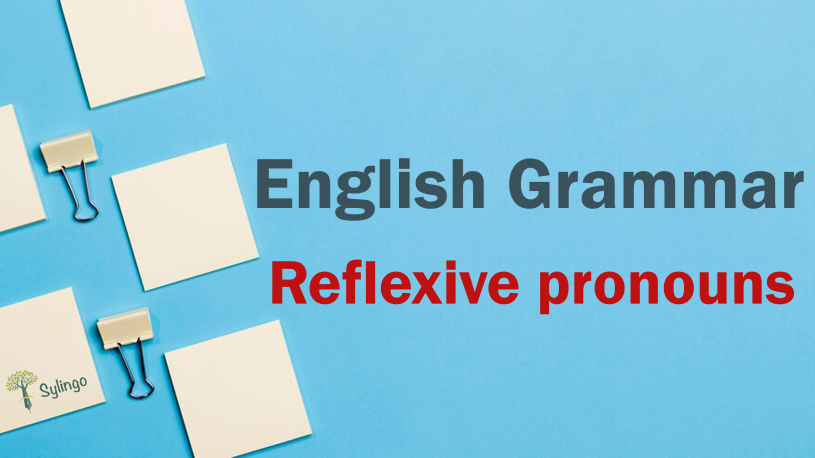Previously, we learned about subject and object pronouns. In this lesson, we will continue with the pronouns lesson and explain reflexive pronouns.
Reflexive pronouns
We use them when the subject of a sentence is the same as the object. There are eight reflexive pronouns in English:
|
Myself |
First person/singular |
|
Yourself |
Second person/singular |
|
Himself |
Third person/singular/male |
|
Herself |
Third person/singular/female |
|
Itself |
Third person/singular/inanimate |
|
Ourselves |
First person/plural |
|
Yourselves |
Second person/plural |
|
Themselves |
Third person/plural |
Examples:
|
I see myself in the mirror. |
|
You will hurt yourself. |
|
He finds himself in law. |
|
She changes herself. |
|
The cat cleans itself. |
|
We enjoy ourselves on vacations. |
|
You encourage yourselves. |
|
They make themselves dinner. |
Note:
Reflexive pronouns come after the verb or the preposition if it refers to the same subject. There are some cases where reflexive pronouns can come after the subject directly.
Example: The test itself was not easy.
Uses of reflexive pronouns
1- When both the subject and the object refer to the same thing in a sentence. Example: You will cut yourself.
2- When we use them as the object of a preposition. Example: Sami is making a cup of tea for himself
3- When we use them for emphasis, they are known as intensive pronouns in this case. Example: I met the manager himself.
That is all for this lesson, if you have any questions or suggestions, you can share them in the comments section below.
Exercise
Fill in the blank the suitable reflexive pronoun.
1- I carried the chair .... .
2- She went by …. .
3- We bought .... a house.
4- They cooked by ….. .
5- The light turns off .... .
Answers
1- myself
2- herself
3- ourselves
4- themselves
5- itself





